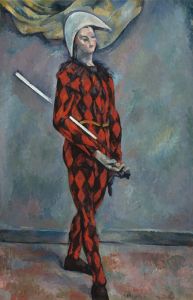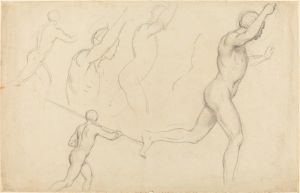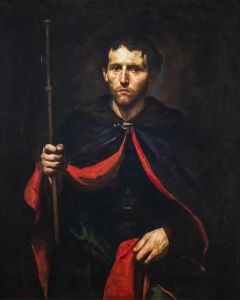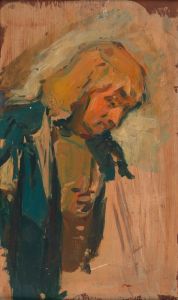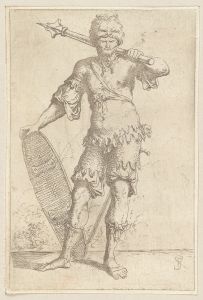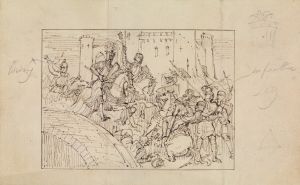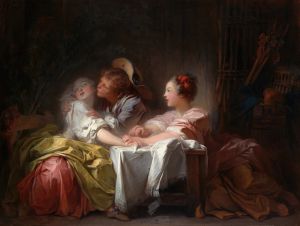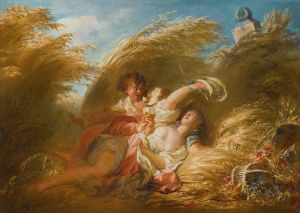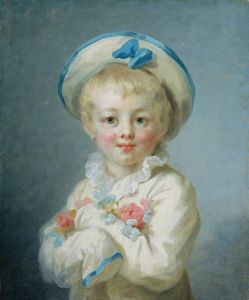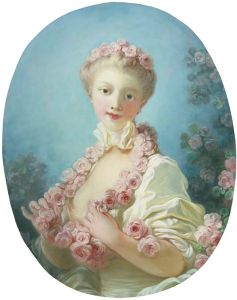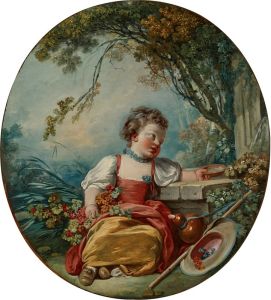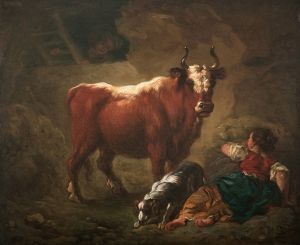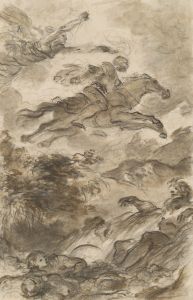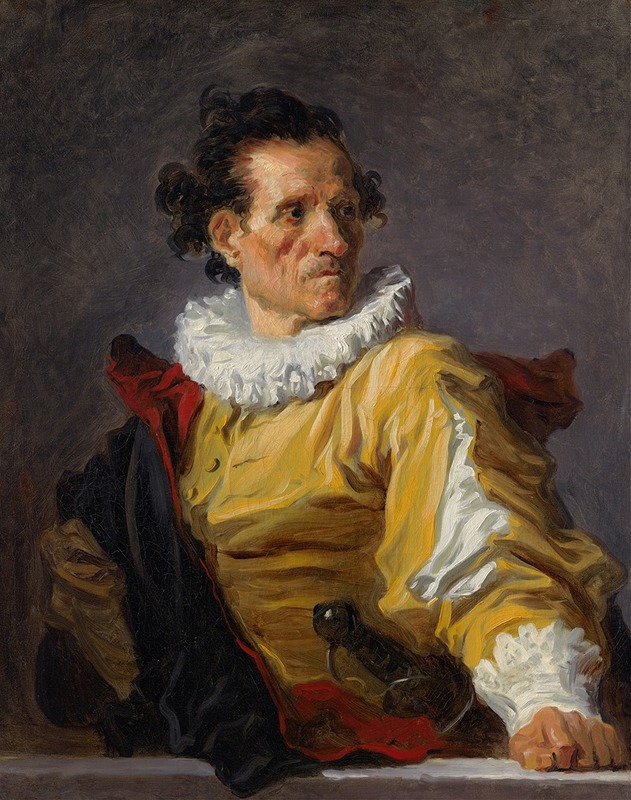
The Warrior
A hand-painted replica of Jean-Honoré Fragonard’s masterpiece The Warrior, meticulously crafted by professional artists to capture the true essence of the original. Each piece is created with museum-quality canvas and rare mineral pigments, carefully painted by experienced artists with delicate brushstrokes and rich, layered colors to perfectly recreate the texture of the original artwork. Unlike machine-printed reproductions, this hand-painted version brings the painting to life, infused with the artist’s emotions and skill in every stroke. Whether for personal collection or home decoration, it instantly elevates the artistic atmosphere of any space.
Jean-Honoré Fragonard, a prominent French Rococo painter, is celebrated for his exuberant and hedonistic style, which often depicted scenes of romance and playful eroticism. However, "The Warrior" is one of his lesser-known works, and there is limited information available about this specific painting. Fragonard's oeuvre primarily consists of genre paintings, portraits, and landscapes, with a significant portion dedicated to light-hearted and intimate scenes.
Fragonard was born in 1732 in Grasse, France, and later moved to Paris, where he studied under François Boucher, another leading Rococo artist. His artistic career flourished in the mid-18th century, a period characterized by the Rococo movement's ornate and decorative style, which was a reaction against the grandeur and strict regulations of the Baroque period. Fragonard's works are known for their fluid brushwork, vibrant colors, and dynamic compositions, often capturing fleeting moments of joy and sensuality.
"The Warrior" diverges from Fragonard's typical subject matter, as it suggests a focus on a more serious or historical theme. Unfortunately, there is scant documentation or scholarly analysis available regarding this painting, making it challenging to provide a comprehensive description or contextual background. It is not prominently featured in major art historical texts or exhibitions, which often concentrate on Fragonard's more famous works such as "The Swing" or "The Progress of Love" series.
In general, Fragonard's paintings are characterized by their lively and energetic style, with a keen attention to detail and a masterful use of light and shadow to create depth and movement. His ability to convey emotion and narrative through his compositions is a testament to his skill and creativity as an artist. Despite the lack of specific information on "The Warrior," it can be inferred that Fragonard's technical prowess and distinctive style would be evident in this work, as in his other paintings.
Fragonard's legacy is significant in the history of art, as he is considered one of the last great Rococo painters. His work fell out of favor during the rise of Neoclassicism and the French Revolution, which demanded a return to classical austerity and moral seriousness. However, his paintings experienced a revival in the 19th and 20th centuries, as art historians and collectors began to appreciate the charm and technical brilliance of the Rococo period.
In conclusion, while "The Warrior" by Jean-Honoré Fragonard remains an obscure piece with limited available information, it is part of the broader body of work by an artist renowned for his contribution to the Rococo movement. Fragonard's paintings continue to be celebrated for their beauty, elegance, and the joy they encapsulate, securing his place as a master of 18th-century French art.





